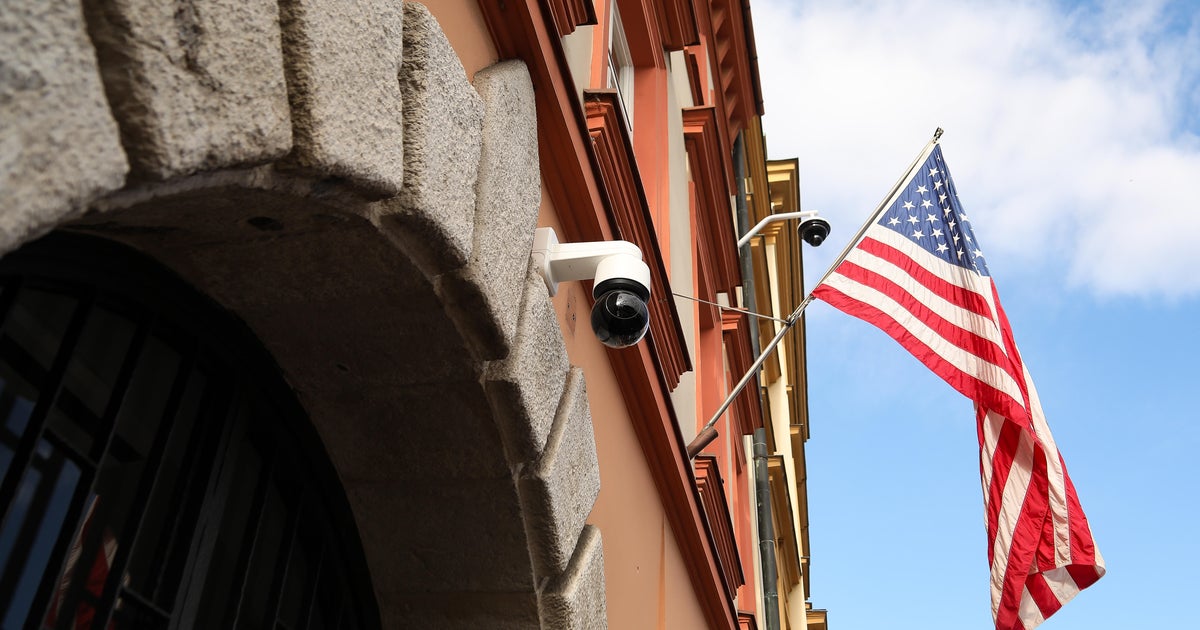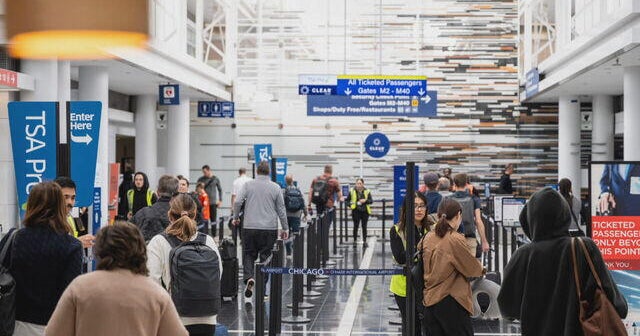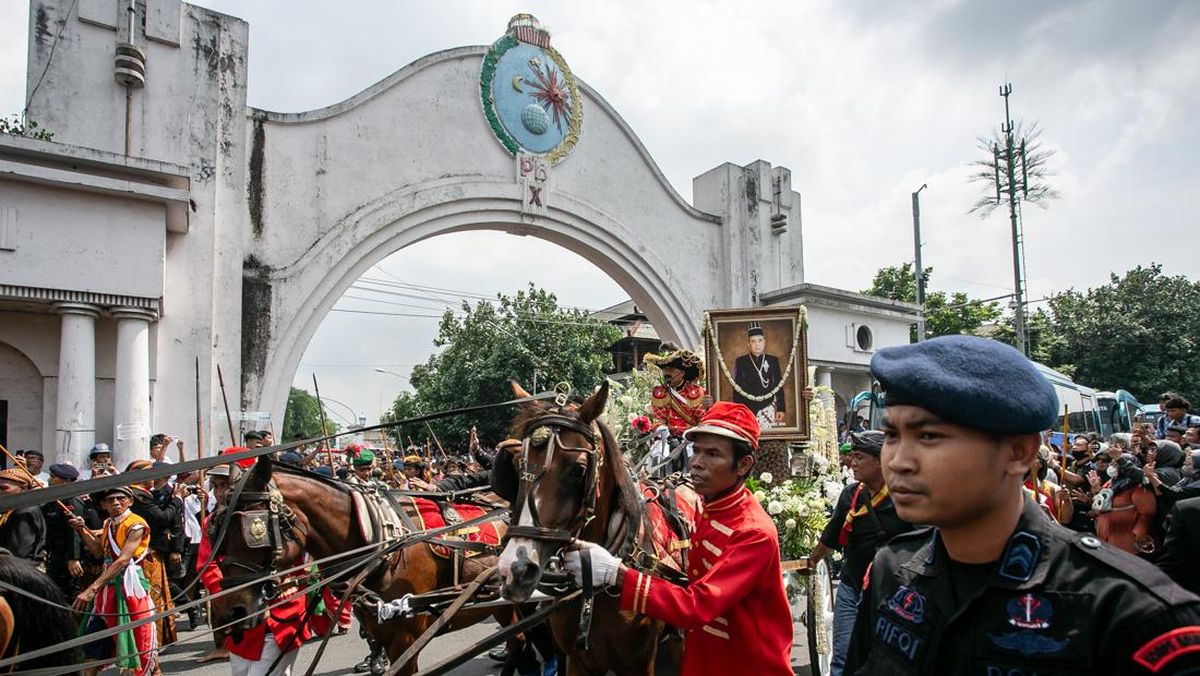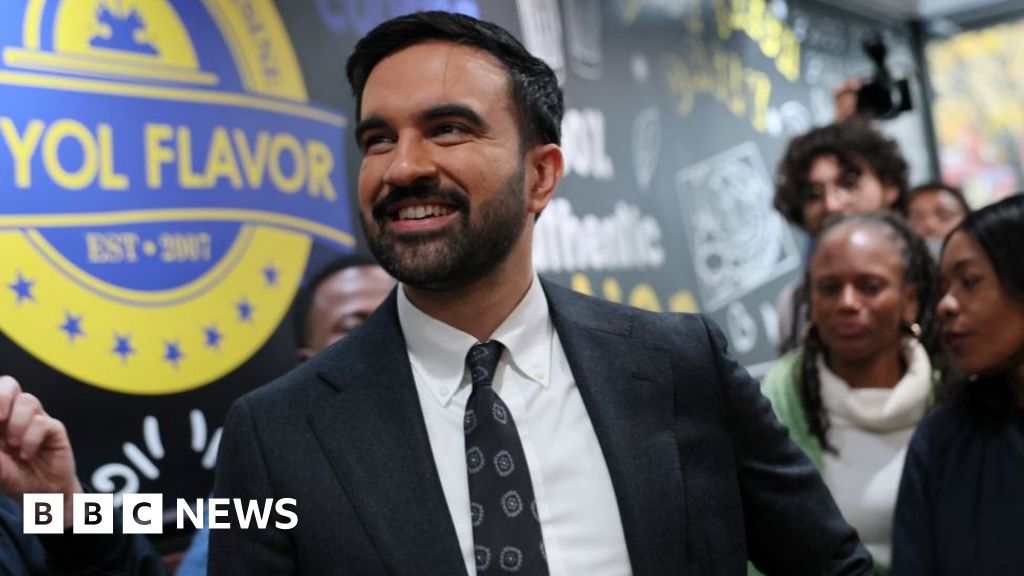Stop me if you’ve heard this one. A three-hat chef and a prize-winning architect walk into an abandoned kiosk in a park. They turn it into what may well be the most significant restaurant opening in a decade. The punchline? Neither of them has ever opened one before.
Yiaga, meaning “to seek and find” in Woiwurrung, the language of Melbourne’s traditional owners, the Wurundjeri people, is a creative collaboration between Vue de Monde executive chef Hugh Allen and architect John Wardle. The Pavilion Cafe had sat abandoned in the Fitzroy Gardens on the eastern edge of the CBD for close to a decade. After a project five years and many millions of dollars in the making, the redesigned and renovated restaurant opened last month.
It’s tempting to slice a tall poppy before it’s even had time to flower, to dismiss this as a restaurant made by (and for) people with money (Yiaga is partially backed by billionaire Singaporean brothers Philip and Robert Ng, who also own the majority share of three-hat fine diner Vue de Monde). And at $295 a head (excluding wine), with just 44 seats, the 12- to 15-course degustation menu – which rolls on for around three hours – is not designed for your average Fitzroy Gardens picnicker.

Yiaga’s founder and executive chef, Hugh Allen.Credit: Kristoffer Paulsen
But here’s another way to look at it. The post-2020 hospitality scene has been in a bit of a share-plate slumber, dominated by grand bistros and neighbourhood diners, with the occasional creative jolt to the arm from small, fun, owner-operated restaurants. Safe, comforting, familiar. Now here’s Yiaga: a dining experience that’s sophisticated in pitch, mature in tone and -thoroughly realised. A loving dispatch to the colours, textures and flavours that make up Australia’s changeable environment. Thoughtful, provocative and unfailingly stylish.
In a world of designer chefs and the countless restaurants around the planet bearing their names – Robuchon, Ramsay, Boulud, Nobu – it’s outliers such as Hugh Allen who bring something new to the table. A reminder that dining out can be more than a meal, it can be an art form.
On that front, Australia is no slouch. In Victoria, there’s Dan Hunter’s farm-to-table Brae. In NSW, there’s Daniel Puskas’s progressive, ferment-driven Sixpenny, and Josh Niland’s fish-focused Saint Peter. They all bring the noise when it comes to elite Australian fine-dining. But little of our extraordinary, diverse food scene has managed to hold attention on the world stage. Could Yiaga be the one to finally move the dial? I spent three days at the restaurant as they set up for their first guests to find out.
The 30-year-old chef is no stranger to excellence. Allen spent three years cooking at Noma, chef René Redzepi’s Copenhagen restaurant that’s widely considered one of the world’s greats, featuring a menu that dances a fine line between naturalist and futurist, executed with 10,000-hour precision. For chefs, working there is the culinary equivalent of training to become a green beret.
At just 23, he became executive chef at Vue de Monde on the 55th floor of the Rialto Tower. At 26, he became the youngest chef in four decades to hold three hats. He’s spent the past six years running Vue, which recently retained its three hats at The Age Good Food Guide Awards. Only four restaurants in Victoria currently hold that position.

The restaurant is in Melbourne’s Fitzroy Gardens.Credit: Kristoffer Paulsen
Despite all that, Hugh Allen is not a flashy guy. He has very little time for things that don’t directly feed back into the restaurant he’s invested so much of his heart, soul and money in. His iPhone is so cracked, it’s like looking at a Magic Eye puzzle. His laptop screen, also damaged, has a huge black line through it. He’s been hoping someone will knock it off one of the benches and completely destroy it so he can justify purchasing a new one. All this is thrown into sharp relief against his beautifully appointed new restaurant, where even the dessert spoons were hand-crafted by a silversmith.
Besides, the show is not Hugh Allen himself, the show is Yiaga. For instance, it’s unusual to see the self-assured, softly spoken chef at the pass (the divider between the kitchen and the outside world, where traditionally you’d find the person running the show). That’s head chef Michael McAulay’s job. Another Noma alum, the 27-year-old moved from Scotland to Australia initially to work at Vue de Monde, where he was sous chef for two years, before spending the past year working on launching Yiaga with Allen.
Together, they’re a study in contrast. McAulay works on his toes, darting and weaving like a matador, holding the front line with a thick Glaswegian brogue. Allen floats with the quiet constancy of a Zen monk, speaking in lilting tones, gliding from one chef station to another.
The pair aren’t the only two Vue transplants. General manager Hugo Simoes and sommelier Dorian Guillon, both longtime members of the Vue team, have also made their way to the garden from the dark, lacquered surrounds of the 55th floor. Allen and Simoes will -continue to split their time between the two.

Head chef Michael McAulay in the open kitchen.Credit: Kristoffer Paulsen
Maybe it’s a generation/age thing, and maybe it’s some of that aforementioned familiarity with his team creating a sense of comfort and calm, but the psychological warfare that would have previously been a hallmark of a kitchen operating at this level doesn’t seem to exist. The impression is of a healthy kitchen culture (one of their hiring rules is a “no dickhead -policy”). Perhaps the idea of beauty only being achieved through -brutality is a concept of the past. If the energy from the 13-strong kitchen team (aged between 20 and 31) is anything to go by, it certainly is here.
I ask Allen one afternoon how he deals with his internalised rage – a trait common in noteworthy chefs working in highly pressurised environments. (Infamous culinary torture artist Marco Pierre White once said, “If you are not extreme, then people will take shortcuts because they don’t fear you.”) Allen told me he doesn’t have any such torment. And I believe him. He is probably the least angst-riddled chef I’ve ever met.
Loading
Before guests arrive, front- and back-of-house sit down together for “family meal”: a chance for calm before the oncoming adrenal storm. Chefs eat generous plates of roast chicken, rice and roast baby zucchini like they mean business, focused on getting back to their stations as quickly as they can. There’s a sense of urgency and industry in the air – tonight is the first night they’ve all worked as a team.
Allen walks around reminding everyone to get some fresh air and stretch before service. “They just want to get back to setting up,” says Allen. “Especially when everything’s new, it’s always quite overwhelming.”
McAulay tours each station in the kitchen, trying the finishing elements of each dish on the menu. He’s been tasting steadily throughout the day. “A lot
of it is the really fine detail,” says the chef, dropping a teaspoon into a container of fresh water. “Nothing gets packed away until it gets tasted by me or Hugh. Thinking about everything again just dials you in. You tasted [the sauce] the first time, but then it’s settled: does it need a tiny bit more salt, is it too intense?”
It also allows honest dialogue. Any problems with a dish can be flagged early enough to be fixed, creating a calmer environment for everyone. “The only reason you would pack something away if it hasn’t been tasted is if something is wrong,” says McAulay. “But everyone’s really good here. I trust everyone.”
In the lead-up to opening, industry chatter was focused on what Allen would bring to the table as a chef outside the confines of Vue de Monde and its 25‑year legacy. Could he create something original? Would it be Vue 2.0? Noma in the park? The answer is mostly no, and very slightly yes. The vision, flavour and execution is most definitely Hugh Allen’s.
To put a dish through the Yiaga lens, Allen and McAulay asked themselves whether it is “seek and find enough”. It must push boundaries, flavour-wise. “Just because it’s an amazing dish somewhere else doesn’t mean it’ll make sense here,” says McAulay.

The open-plan kitchen flows into the dining space. “I want my staff to really engage with the diners,” says Allen.Credit: Kristoffer Paulsen
Coral trout, initially served with brassicas, felt too classic and European to the pair. Instead, they kept experimenting until they landed on barbecuing the Far North Queensland fish, pairing it with a cheek of new-season mango and sunrise lime, finally injecting it with the base heat of Mexican chilli oil, a suggestion from 29-year-old chef Eduardo Guasch.
There’s a wildness to the composition here, akin to a Turner landscape. A command of balance and restraint, executed with the kind of abandon only people who have learnt the rules can achieve when they decide to break them. “We don’t really know what ‘here’ feels like ourselves, yet,” says Allen. “We’re new here as well. But we want the food to be very interesting. We want to really push things.”
Corner Inlet squid from Gippsland were so large when they were delivered that they took up an entire kitchen benchtop. The flesh is gently confited and cured in white miso, dressed with desert lime, served in a light citrus broth and finished with the peppery tang of Thai basil.
There’s deep harmony in a set coconut cream layered with concentrated coconut water, finished with a lump of caviar, a touch of lime zest and a tiny hint of fresh-pressed macadamia oil. A dish so finely tuned that it dampens and mutes the surrounding sounds of the restaurant, just for a moment.
Flavoured oils are used less like an ingredient and more like a perfume: gentle enhancements like Geraldton wax, and those macadamia and chilli oils. “I think dining should be exciting,” says Allen. “Food that’s aromatic. Ingredients you’ve never had before, hopefully. Flavours that you can’t work out. Obviously, with all that it still has to be delicious, but we want it to feel very new and really Aussie.”

Coconut cream and caviar: Yiaga’s menu aims to “push the flavour boundaries”.Credit: Kristoffer Paulsen
Kangaroo cutlets are gently cooked through service, starting raw at the top of the open hearth, slowly taking in smoke for flavour, then brought down over the coals, glazed with smoked butter and a concentrated sauce made from all the other parts of the kangaroo, served with maitake mushrooms poached in mushroom stock then grilled and glazed with cured egg yolk.
They’re looking farther afield at producers, too, utilising forgotten or under-appreciated ingredients. Slices of 14-year-old retired wagyu cow (which would normally be around four when they meet their fate) are draped over a bite-sized steamed bun. The meat, from producer David Blackmore, is very slightly salt-cured but mostly raw, seasoned with green ants and wild garlic capers.
Wakame, an invasive seaweed species originally from Japan, is gently cooked in a broth made with cherries and marigold, layered over a strawberry and finished with a crisp rose-vinegar-pickled shiso leaf. The result is like the most pungent, sweet strawberry-scented scratch’n’sniff.
“You should have that surprise element, especially if it’s a tasting menu,” says Allen. And nothing is more surprising than holding a bushel of banksia branches, biting into what looks like a gnarled old banksia pod, only to taste black sesame, chocolate and gooey caramel. Getting the ice-cream, which dangles quite precariously off the branch, to the dining table without it falling on the floor took around 40 practice walks, and just the right amount of time in the freezer, to make sure it was foolproof.
“Only one or two have dropped,” says Allen. “It’s pretty good odds.”
Finding someone in the design world who could match Allen’s levels of drive, focus, obsession and world view was always going to prove challenging. The chef spoke to a number of prominent Melbourne architects but knew he had found the right person in John Wardle when, during their first conversation, they spent the first half-hour speaking about clay. The architect looked at textiles the way Allen looked at ingredients.

Allen with architect John Wardle during construction.Credit: Kristoffer Paulsen
“I sort of borrowed the thing about food miles,” says Wardle. “That there’s not a lot that can cross the border of Victoria in [regards to] materials. We skipped across the Bass Strait into Tasmania and across to South Australia for a few things, but then it reverberated around Melbourne and the various rural areas of Victoria.”
The architect, who is in his late 60s, has designed family homes, high-rise buildings, art galleries, museums, a conservatorium of music and his own holiday home, the Shearers Quarters on Bruny Island. But it’s the first time he’s designed a restaurant, which was a large part of the reason Allen wanted to work with him.
The two would text each other day and night with ideas: objects they’d found, makers, techniques and artists they’d discovered. “The capacity of what could be possible in one small restaurant grew enormously,” says Wardle. As with everything when it comes to Allen, the initial pitch was softly told to Wardle, who says it was a subdued, gentle and subtle start: “It’s the way he appears to the world.”
The vision for the Pavilion Cafe is – much like the menu – all about a sense of place. The challenge was to create something new that would stand the test of time and define the part of the city it’s in. And so, the straight-line style of the original 442-square-metre, 1960s bungalow was transformed into something timeless, natural and curvaceous.
Loading
Over the two years Wardle has been working on the project, he’s become extremely attached to the restaurant. An enormous amount of his evenings and weekends were spent playing with detail. The lion’s share of the materials used in the build are bespoke, which meant a lot of research, testing, prototyping and countless revisions to get it right. “When you do a project like this,” says Wardle, “you are literally designing the fabric of the building.”
Bricks of dusky rose, warm peach and terracotta are made from local Victorian clay by third-generation brickmakers Krause bricks. They’re mortared lengthways, with the binding made to dribble out like an overfilled ice-cream sandwich. At first the brickies weren’t having a bar of it; it was messy and unorthodox. Allen and Wardle remained firm with their vision. The result mimics the bark on the trunks of the surrounding elms in the gardens.

Unorthodox mortaring mimics the bark of nearby elm trees.Credit: Kristoffer Paulsen
When the saltbush, native daisies and billy buttons, native grasses and eucalypts planted around the restaurant eventually grow in, the effect will be a riot of yellow, purple, grey and green. A berm that will soften into something like a Princess Di haircut. “The idea is you walk through the landscape, you don’t know where you are, where you go, and how you’re in,” says Allen. “You might even be lost.”
Inside, it’s a palette of burns. The floors, concrete mixed with iron, give an effect of baked red dirt just after the rains have been through; 15,565 terracotta tiles were handmade and installed, extruded and hand-cut locally by Victorian potter Robert Gordon to create a shingleback effect that coils through the entire venue.
Loading
“The terracotta unravels,” says Wardle. “It changes radius, it changes direction, it sweeps out in places and comes back and joins itself. It’s just this kind of continual unfurling of a wall surface. And I think that also is a sort of gentleness to it I’m pleased with.”
On entry, an antechamber houses nothing more than a terracotta-tiled front desk finished with a Pilbara stone tabletop, polished to bring up every rose- and cream-coloured curl. Resting on it is a piece of convict-era sandstone from the 1830s, found on Wardle’s Bruny Island property. After years of wind and water exposure, its final resting place is propping up the iPad used for checking off reservations.
In the 44-seat dining room, soft blue glass pendants by local industrial designer Edward Linacre drop a perfect concentric circle of light in the middle of each Tasmanian blackwood tabletop. Custom dining chairs by fourth-generation furniture-maker Jon Goulder have a frameless seat covered in thick, firm, caramel leather. The result is a sort of sling/saddle that moves with your body, so every wriggle and tilt is supported.

In the 44-seat dining space, seats are turned inwards to face the kitchen.Credit: Kristoffer Paulsen
There is a slight (or maybe not so slight, depending on your opinion about views while you eat) quirk to the way the room has been arranged. The chairs and tables, originally set to take in the majesty of the gardens, now turn inwards to face the kitchen. “I want my staff to really engage with the diners, and I don’t want to be handing food over their shoulder while they look at the view,” says Allen.
Narrowly specific touches rule here. The cellar, kept at an ambient 12 degrees, is made of Tasmanian blackwood, designed and made by Geelong local Ross Thompson. It holds a 70 per cent Australian wine collection, many from producers making just enough wine to sell to the restaurant alone. The particularly special note is that a thermometer is kept on hand in a single bottle of wine each service, testing not the temperature of the bottles but the temperature of the wine itself.
Loading
The kitchen is open-plan, and flows into the dining space. Much like the rest of the restaurant, it’s a lesson in exacting taste. Even the exhaust grates are covered by custom-made terracotta tiles. It’s possibly the only restaurant in the country where a detail that minor is considered. A wood-fired grill is the only source of open flame in the service area, set up for ease of movement, maximum flow and a general feel of good energy. Many of the dishes are delivered and explained by the chefs themselves; diner interaction is an essential part of the job.
Some chefs, like 31-year-old Andy Hall, found it took a little getting used to working so publicly. “I was very conscious of being on show,” he says, while stoking the hearth flames. “But you do a lot of training, and confidence is key. And now I love it. It’s so good to interact. To take the plates, and to have people come in and watch what you’re doing. You’re proud to work here. You want to show people.”

Chef Andy Hall: “You’re proud to work here. You want to show people.”Credit: Kristoffer Paulsen
Restaurants with this much heart are rare. Only time will tell if this is a place Australia needs, but it’s certainly a place Australia deserves.
Yet for all the creativity, effort and expense, Yiaga is not permanent. Allen has secured a 21-year lease on the property. After the lease is up he will need to put in for tender, along with anyone else interested in the site. There is no guarantee he’ll succeed.
What will the chef do after that? He’ll barely be 51. “I don’t know,” he says. “Maybe I’ll take up pottery.”
To read more from Good Weekend magazine, visit our page at The Sydney Morning Herald,The Age and Brisbane Times.


















































